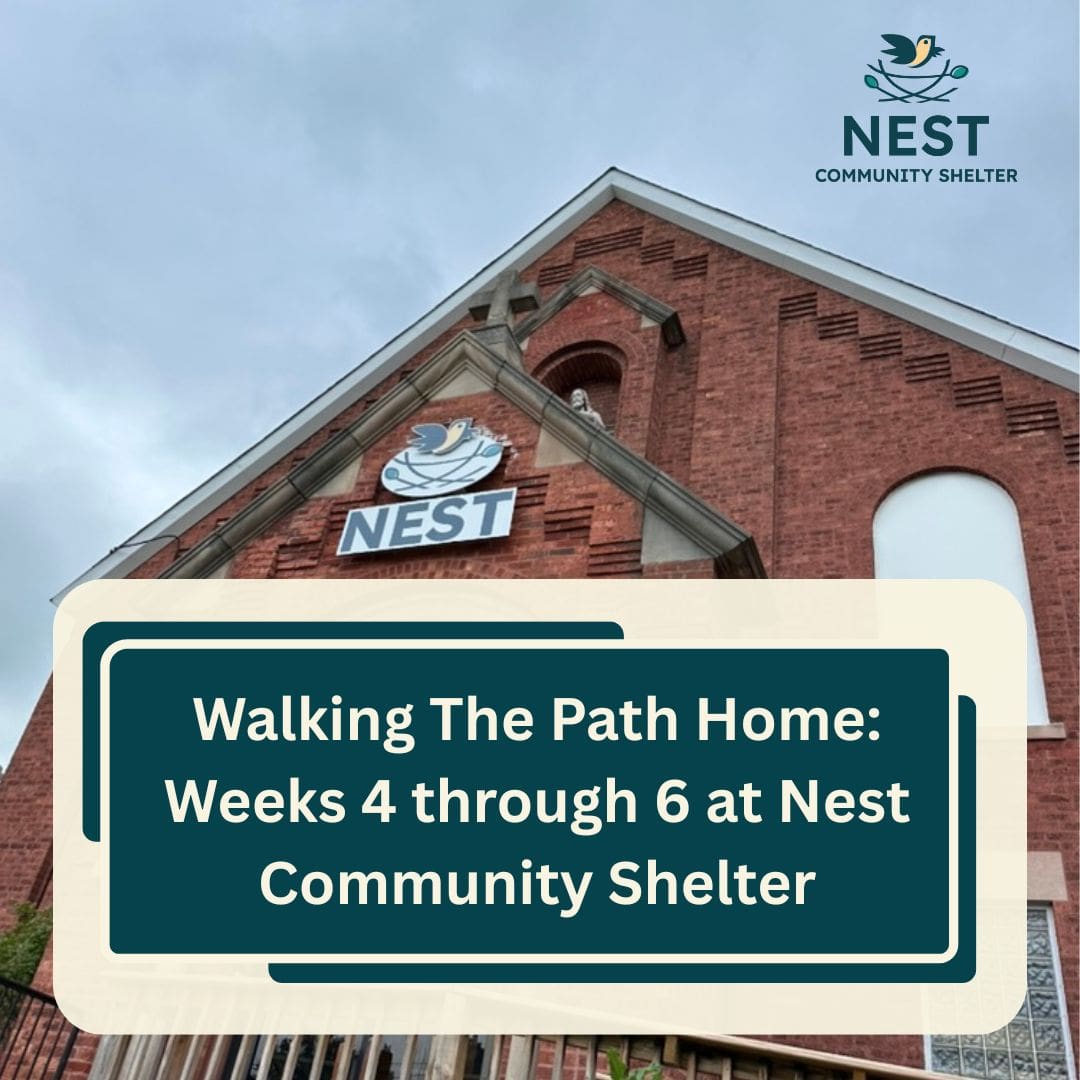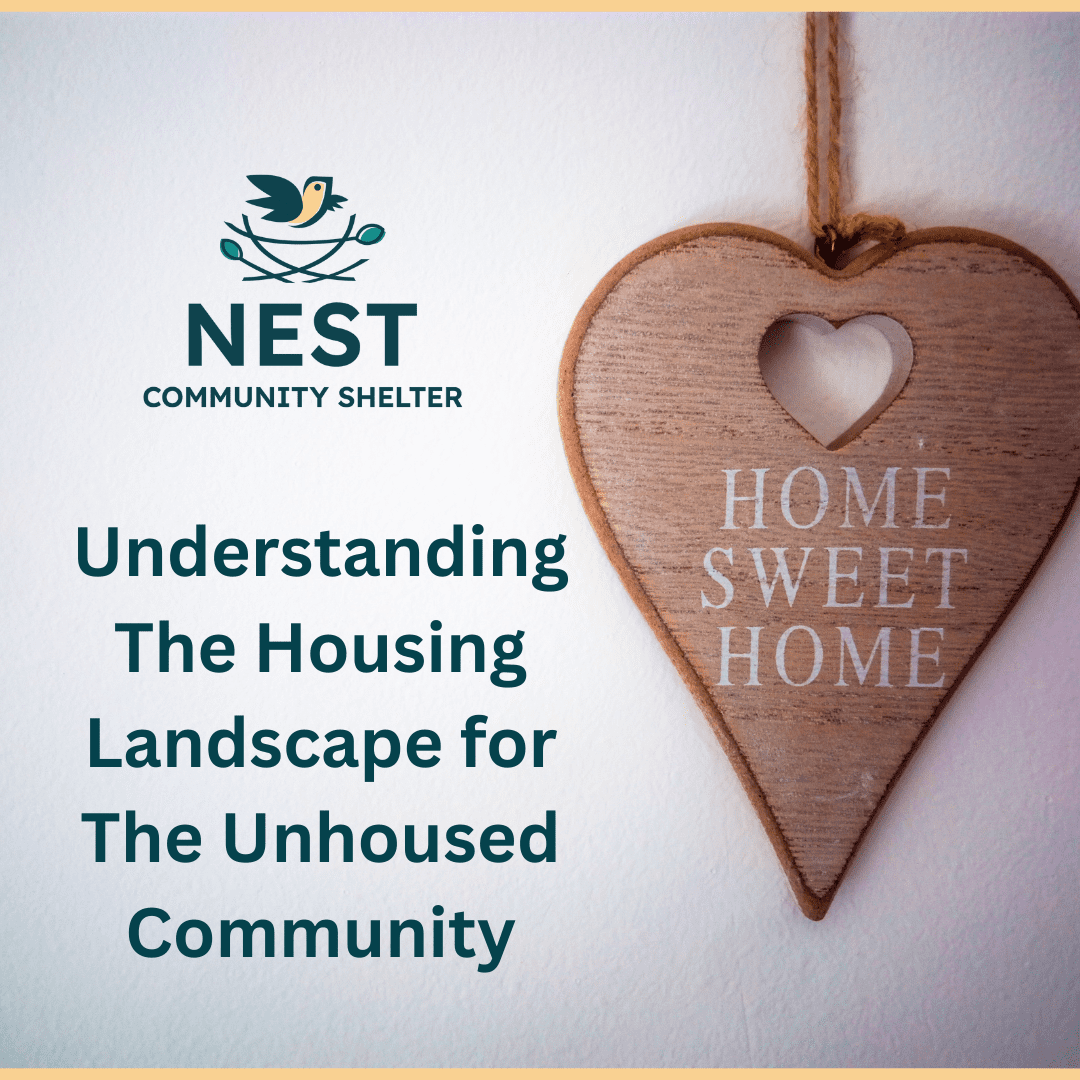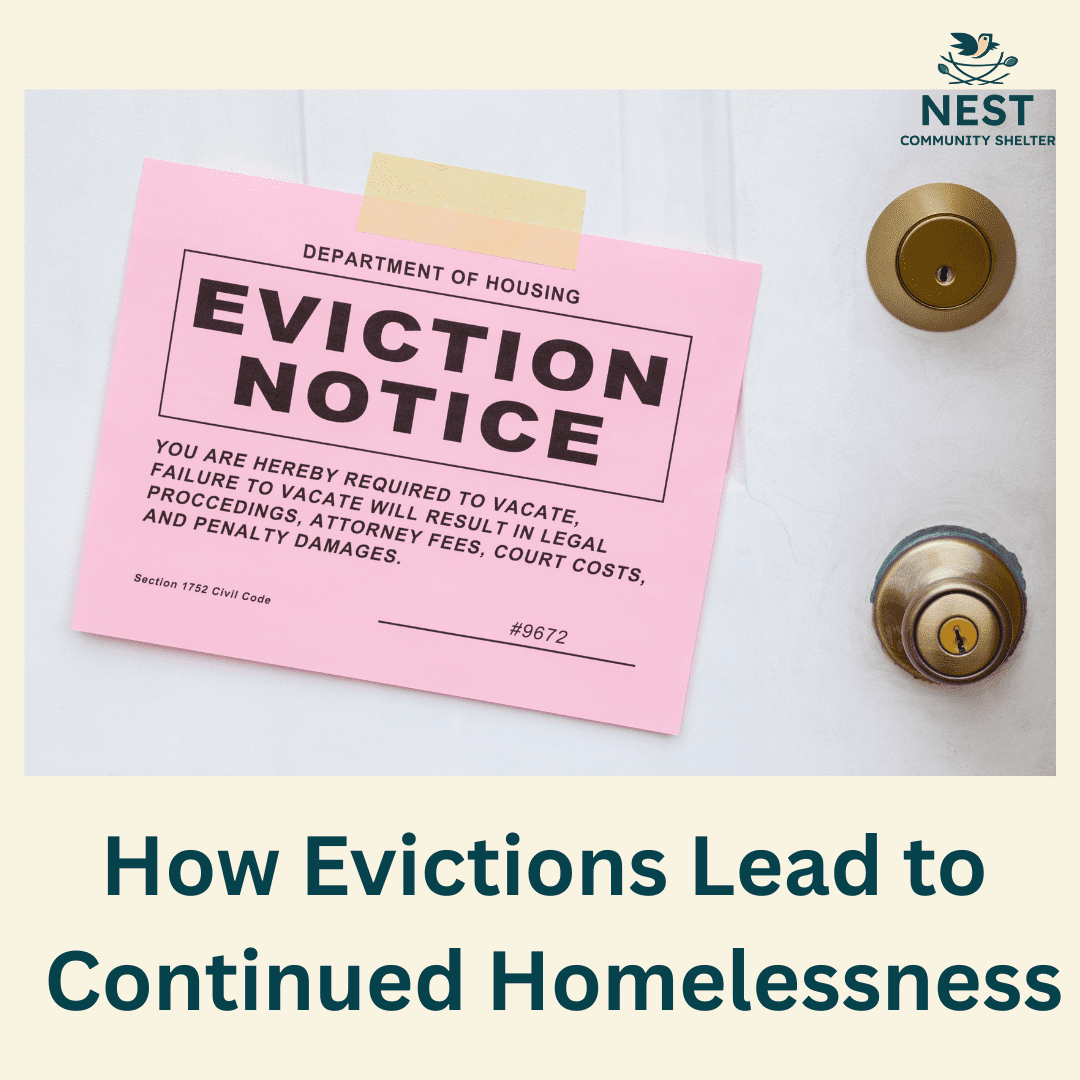
As we near the end of our month-long series on what it is like for our guests to work through the Nest Community Shelter program, we hope that the previous blog posts have shown how the groundwork is laid with each guest, goals are set, and support and guidance are provided. As a companion to each weekly post about the program from Nest’s perspective, we’ve also shared a fictionalized account of a man named John who is sharing a fictionalized narrative as he works to rebuild his life while at Nest. While John’s story is completely fictionalized, it comes from years’ worth of stories and experiences that reflect what reality can be like for our guests.
Today, we are sharing weeks 4-6 at the Nest program. Our average stay is about 45 days, which brings us towards the end of our program for some. As our mission states, we reconnect our guests to their community, meaning that we remain a resource for them even after they are housed. So, with that, let’s dive into the last few weeks of what our program at Nest Community Shelter typically entails.
Week 4’s Goal: Employment
By the one-month mark at Nest, our goal is that our guests have either obtained employment, secured additional employment, or are actively seeking a role that will cover their expenses and provide a stable living environment. For some, this process takes a little longer and can be more complex when combined with health issues, document issues, or other extenuating circumstances. During this time, guests will meet with their case worker and/or Flight School instructor to continue focusing on their goals and address any obstacles that might stand in the way of obtaining employment. For those who require a little more time and support, our team must emphasize the importance of consistency. At this time, we also want to support our guest who are obtaining new employment, ensuring they have all they need to be successful in their new job.
Week 5’s Goal: Budgeting and Money Management
For those who arrived at Nest with a job and for those who are newly employed, we continue to emphasize the importance of saving funds for housing. This week, we take a close look at the distinction between wants and needs when budgeting. This can be an adjustment when the dream of a future home and all that it entails does not align with budget reality. For example, when considering furniture, does it have to be brand new, or will a second-hand option suffice? Does your new place need to be fully furnished, or can it be done slowly over time to manage cash flow? Looking at things like streaming services, internet, and small creature comforts that, when added up, make an impact on a monthly budget. We help our guests distinguish between what is truly needed and what is merely wanted.
As savings accumulate and job stability is achieved, we begin to assist guests who have sufficient funds saved to explore housing options. We connect with partners and our network of landlords to identify potential vacancies. For those who qualify, we also explore whether there is a housing voucher opportunity available. This is rare, but it does occasionally happen for our guests. Our goal is stable housing. For some of our guests, this may mean renting a room, living with a stable family member, or sharing a room with a roommate. We work with our guests and partners for innovative, healthy, and stable living environments.
The community also plays a vital role at this time for our guests and will remain key to their success in the future. We know that individuals who build strong support networks are less likely to return to Nest or to another shelter for unhoused individuals. Throughout a guest’s stay with us, they’ve the opportunity to meet other guests, Flight School instructors, and several volunteers, as well as members of local faith communities. This time of reconnection is essential for our guests, and we see increased confidence in them. Some might attend a church service if they wish and form connections within a church community, while others establish deep connections with other organizations and individuals who work with Nest. This creation or rekindling of one’s community is essential for our guests.
Week 6: Home (For Some)
By week six, if all has gone to plan and there have been no unexpected obstacles, it is very possible for a guest to be moving into a safe and stable living environment of their own. However, this doesn’t mean that their involvement with Nest ends once they move on from the shelter; we remain a resource and an integral part of our guests’ support network. We can sometimes help guests source some basic household needs by working with partners and volunteers across the community. This transition is a significant milestone in the lives of our guests, and we cheer on and support each individual who comes through our door. We are committed to helping our guests reach this turning point in their lives, which we hope will pave the way forward for a happy, healthy, and successful future.
While our program is designed to last around 45 days, we also recognize that this timeframe may not be feasible for every guest. Each individual is unique, and so are their obstacles and challenges. For example, for an individual who needs to restart a medication to function in life, it may take several weeks for the medication to regulate in their system. Individuals in certain situations may require a different approach with a different timetable. No two guests are the same, and setbacks happen. It is our job to support and encourage our guests during these times and show them that achieving their goals is still possible despite setbacks. We approach each guest with dignity, dedication, and determination, because we believe that success is achievable for every one of our guests.



